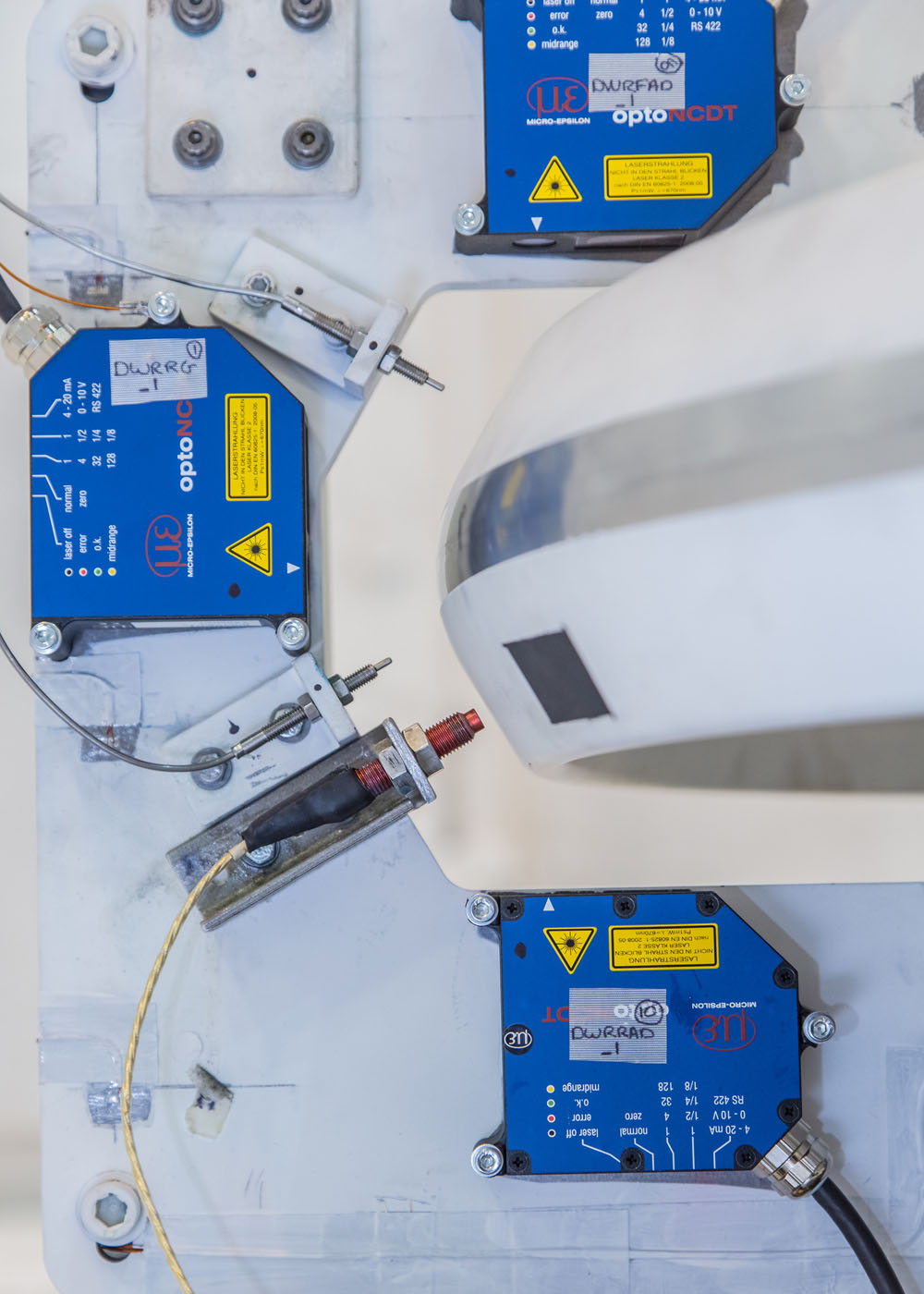
作为英国Bloodhound火箭车项目的产品支持方,米铱英国分公司总共为该项目提供了15支激光位移传感器。劳斯莱斯公司位于英国德比的测试机构负责进行该项目的检测工作。9支量程10mm的optoNCDT1700点激光传感器被用于测量宇航级别金属铝(AL7037)质车轮轴向和径向尺寸,车轮转速高达惊人的1700km/h。两支量程2mm的optoNCDT1700点激光传感器被用于测量测试台横梁的热膨胀。除此以外,测试台还配备了4支optoNCDT 1402点激光传感器。这些传感器可以测量测试台移动,偏差的程度。测试过程中,转轮转速成功到达10,429rpm,测试印证了 BLOODHOUND工程师们之前作出的直径达902.6mm的转轮在如此高转速下的膨胀不超过1.6mm的预测。
As product sponsor for the Bloodhound Project, Micro-Epsilon UK supplied a total of 15 laserdisplacement sensors for the wheel spin test carried out at the Rolls-Roycetest bench in Derby (Great Britain). Nine optoNCDT 1700 sensors witha measuring range of 10mm were set up on the test rig to measure theradial and axial run out of the aerospace-grade aluminum (Al 7037) wheel as itrotated at speeds of more than 1700km/h (1,100mph). Two optoNCDT 1700 laserdisplacement sensors with a measuring range of 2mm were set up to measurethe thermal expansion of the frame that runs across the top of the test rig(i.e. for test rig calibration purposes). In addition to the optoNCDT 1700sensors, the test rig was also equipped with four optoNCDT 1402 laser sensors(with a measuring range of 5mm), which were mounted underneath the testrig in a confined space. These sensors measured the run out, alignment andany other movements of the test rig, including the steel hub that the wheel ismounted to. During the test, the wheel was successfully spun to 10,429 rpm. Testresults were similar to the predictions that the BLOODHOUND engineers hadcalculated - the expansion of the wheel’s 902.6mm diameter by 1.6mm was asexpected.

 您当前的位置:
您当前的位置:


